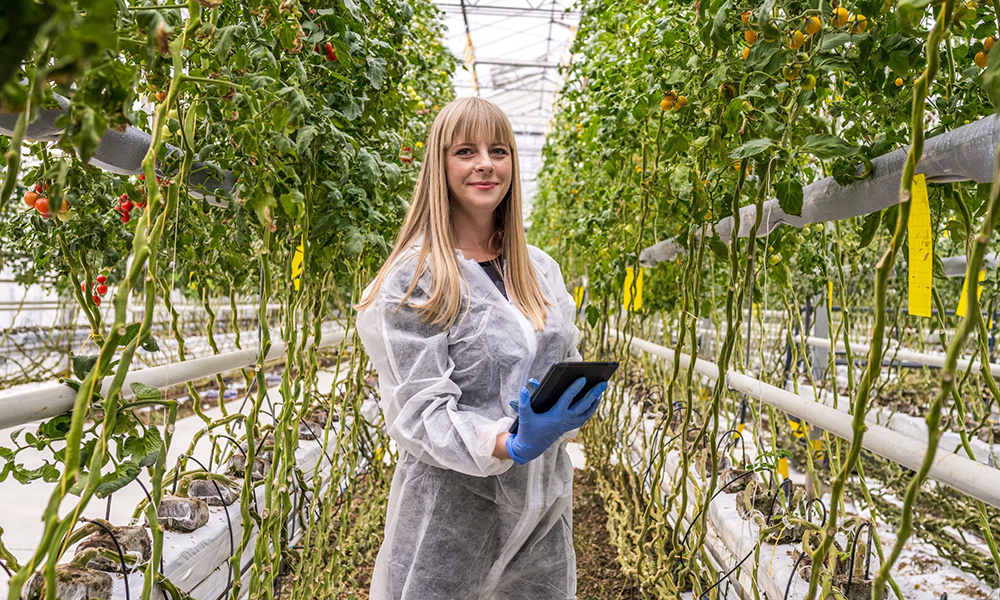
我们正进入绿色技能的时代,但说到底,什么是绿色技能?企业表示,绿色人才或具有气候相关工作经验的员工需求越来越大,而且各国各行业这一趋势都很明显。
需求相关技能的企业数量也在增加。领英(LinkedIn)一份报告显示,2022年至2023年间需要至少一项绿色技能的职位平均增加了22%。
企业比以往更需要受过绿色技能培训的员工,或者说人们从气候相关工作或绿色技术领域学到的经验,然而只有八分之一的员工真正掌握相关技能。在当今就业环境中,掌握绿色技能的员工找到工作的速度更快,主要进入电动汽车、石油和天然气以及金融等行业。受过绿色技能培训的劳动力很重要,随着强风暴、海平面上升、热浪和干旱等灾害日渐频繁,全球变暖情况已然很糟,今后情况也不容乐观。
领英分析写道,受过绿色技能培训的劳动力可“加速向绿色经济过渡”,也有助于融入气候知情政策。
过去五年中,需求绿色技能的工作岗位增长了9%以上,而掌握相关技术的员工比例仅增加了5.4%。报告发现,在墨西哥、印度和法国等纳入研究的48个国家中,领英上明确列出需要绿色工作或技能的员工数都在增加。报告还发现,在研究的每个国家,具有绿色技能的员工找到新工作的几率都比不具备绿色技能的人要高。2022年至2023年,绿色人才在劳动力中的比例中位数上升了12%,但供给仍跟不上技能需求。至少需要一项绿色技能的招聘岗位数量增速是原先两倍。
英国可持续发展专业教授莎拉·斯特拉坎告诉《财富》杂志,“从最简单层面上讲是供需问题”,她的研究成果“显示技能市场越来越全球化”。
“提升现有劳动力技能的需求很强烈,”她说。
从实际情况来看,掌握绿色技能的员工对能源生产、运输和金融等碳密集度最高或温室气体排放量最大的行业至关重要,因为这群人将引领变革。
斯特拉坎表示,最迫切需求的技能“可能是‘软性’可转移技能,而不是‘硬性’技术技能。”对软性技能更高需求代表着从“知识型技能”向“态度型技能”转变,公司可依靠相关技能在气候知情基础上推进发展。
绿色技能可改善全球最大的碳排放源
电力和热能等能源生产行业是全世界最大的碳排放源,其次是运输和建筑,全球大部分电力仍然依靠化石燃料。
预计到2050年,全球能源需求将增长47%,中国、德国和印度等市场上风能和太阳能等可再生能源将继续增加。
行业企业发现具有太阳能、核能发电、供水和灌溉系统等技能的员工比缺乏相关技能的员工吸引力更大。领英报告发现,在研究涉及的各个国家,可再生能源行业中掌握绿色技术的员工就业率也在增长,每当有100名员工离开行业,就有120人加入。2016年以来,石油和天然气行业的技术员工集中度增加了21%。
清洁能源转型仍在过程中。报告发现,在澳大利亚和阿联酋等国,加入化石燃料行业的员工比离开行业的人数更多。在美国、德国、新加坡和法国等国家,离开化石燃料行业比加入行业的人要多,不过减少速度在放缓。
金融比其他行业“绿色转型更快”
报告显示,金融业“绿色转型速度比大多数行业快”,行业绿色人才同比增长近15%。美国发展最快的一些绿色技能包括碳核算或计算组织的温室气体排放量,以及饮用水质量、能源工程、碳信用和排放以及能源审计等。
这一有影响力的行业是应对气候变化所需的“转型关键推动者”,也是支持气候企业家获取资本、鼓励气候友好型投资以及激励金融机构加大投资应对气候变化展开对话的平台。
向清洁能源经济过渡
向绿色经济的过渡正在进行中。与加拿大的《可持续就业计划》(Sustainable Jobs Plan)和欧洲绿色协议类似,美国的《通胀削减法案》(Inflation Reduction Act)也是众多计划之一,各大计划将资金用于创造注重应对气候变化的就业机会。其中美国的计划2022年8月已签署成为法律,创造了超过17万个清洁能源就业机会。联合工会和环保组织的蓝绿联盟(BlueGreen Alliance)称,到2032年该法案创造的就业机会将达900万个。
接下来要采取的过渡步骤包括改变工作岗位本身。报告发现,为了加强对可持续性的重视,“工作本身”必须“不断发展”从而承担更多气候方面的责任,例如政策建议或设施管理等。 (财富中文网)
译者:梁宇
审校:夏林
我们正进入绿色技能的时代,但说到底,什么是绿色技能?企业表示,绿色人才或具有气候相关工作经验的员工需求越来越大,而且各国各行业这一趋势都很明显。
需求相关技能的企业数量也在增加。领英(LinkedIn)一份报告显示,2022年至2023年间需要至少一项绿色技能的职位平均增加了22%。
企业比以往更需要受过绿色技能培训的员工,或者说人们从气候相关工作或绿色技术领域学到的经验,然而只有八分之一的员工真正掌握相关技能。在当今就业环境中,掌握绿色技能的员工找到工作的速度更快,主要进入电动汽车、石油和天然气以及金融等行业。受过绿色技能培训的劳动力很重要,随着强风暴、海平面上升、热浪和干旱等灾害日渐频繁,全球变暖情况已然很糟,今后情况也不容乐观。
领英分析写道,受过绿色技能培训的劳动力可“加速向绿色经济过渡”,也有助于融入气候知情政策。
过去五年中,需求绿色技能的工作岗位增长了9%以上,而掌握相关技术的员工比例仅增加了5.4%。报告发现,在墨西哥、印度和法国等纳入研究的48个国家中,领英上明确列出需要绿色工作或技能的员工数都在增加。报告还发现,在研究的每个国家,具有绿色技能的员工找到新工作的几率都比不具备绿色技能的人要高。2022年至2023年,绿色人才在劳动力中的比例中位数上升了12%,但供给仍跟不上技能需求。至少需要一项绿色技能的招聘岗位数量增速是原先两倍。
英国可持续发展专业教授莎拉·斯特拉坎告诉《财富》杂志,“从最简单层面上讲是供需问题”,她的研究成果“显示技能市场越来越全球化”。
“提升现有劳动力技能的需求很强烈,”她说。
从实际情况来看,掌握绿色技能的员工对能源生产、运输和金融等碳密集度最高或温室气体排放量最大的行业至关重要,因为这群人将引领变革。
斯特拉坎表示,最迫切需求的技能“可能是‘软性’可转移技能,而不是‘硬性’技术技能。”对软性技能更高需求代表着从“知识型技能”向“态度型技能”转变,公司可依靠相关技能在气候知情基础上推进发展。
绿色技能可改善全球最大的碳排放源
电力和热能等能源生产行业是全世界最大的碳排放源,其次是运输和建筑,全球大部分电力仍然依靠化石燃料。
预计到2050年,全球能源需求将增长47%,中国、德国和印度等市场上风能和太阳能等可再生能源将继续增加。
行业企业发现具有太阳能、核能发电、供水和灌溉系统等技能的员工比缺乏相关技能的员工吸引力更大。领英报告发现,在研究涉及的各个国家,可再生能源行业中掌握绿色技术的员工就业率也在增长,每当有100名员工离开行业,就有120人加入。2016年以来,石油和天然气行业的技术员工集中度增加了21%。
清洁能源转型仍在过程中。报告发现,在澳大利亚和阿联酋等国,加入化石燃料行业的员工比离开行业的人数更多。在美国、德国、新加坡和法国等国家,离开化石燃料行业比加入行业的人要多,不过减少速度在放缓。
金融比其他行业“绿色转型更快”
报告显示,金融业“绿色转型速度比大多数行业快”,行业绿色人才同比增长近15%。美国发展最快的一些绿色技能包括碳核算或计算组织的温室气体排放量,以及饮用水质量、能源工程、碳信用和排放以及能源审计等。
这一有影响力的行业是应对气候变化所需的“转型关键推动者”,也是支持气候企业家获取资本、鼓励气候友好型投资以及激励金融机构加大投资应对气候变化展开对话的平台。
向清洁能源经济过渡
向绿色经济的过渡正在进行中。与加拿大的《可持续就业计划》(Sustainable Jobs Plan)和欧洲绿色协议类似,美国的《通胀削减法案》(Inflation Reduction Act)也是众多计划之一,各大计划将资金用于创造注重应对气候变化的就业机会。其中美国的计划2022年8月已签署成为法律,创造了超过17万个清洁能源就业机会。联合工会和环保组织的蓝绿联盟(BlueGreen Alliance)称,到2032年该法案创造的就业机会将达900万个。
接下来要采取的过渡步骤包括改变工作岗位本身。报告发现,为了加强对可持续性的重视,“工作本身”必须“不断发展”从而承担更多气候方面的责任,例如政策建议或设施管理等。 (财富中文网)
译者:梁宇
审校:夏林
We are entering the era of green skills, but what are they, anyway? Companies say that green talent, or workers with experience in a climate-related job, are increasingly in demand, which is growing across all sectors and countries.
The number of employers looking for these skills has grown, too. According to a LinkedIn report, between 2022 and 2023, job postings that require at least one green skill have grown by a median of 22%.
Employers are looking for workers who are trained in green skills, or those that people learn in climate-related jobs or green technology, more than ever–yet only one in eight workers have them. In today’s job climate, workers with green skills are getting hired at higher rates and are entering sectors ranging from electric vehicles, oil and gas, and finance. A workforce trained in green skills is important because of how dire the planet’s global warming has become—with intense storms, rising sea levels, and heat waves, and drought just some of the disasters that’s befallen people—and it’s getting worse.
A green skill-trained workforce can “accelerate the transition to a green economy,” the LinkedIn analysis wrote, and help integrate climate-informed policies.
In the last five years, jobs that require green skills grew by over 9% while the share of skilled workers only grew by 5.4%. The number of workers who listed a green job or skill on LinkedIn, the report found, has grown in every one of the 48 countries included in the study, like Mexico, India and France. The report also found workers with green skills have been hired for new jobs at higher rates than those without in each country studied. Between 2022 and 2023, the prevalence of green talent in the workforce rose by a median of 12%, but still, the demand for skills is outpacing the supply. The number of job postings requiring at least one green skill grew twice as quickly.
Sarah Strachan, a professor who teaches sustainability in the UK, told Fortune that “at the simplest level it’s a case of supply and demand,” and that her research “shows that the skills market is increasingly global.”
“There is an urgent need to upskill the current workforce,” she said.
As it turns out, workers with green skills are pivotal to sectors that are the most carbon-intensive or create the most greenhouse gas emissions, like energy production, transportation and finance–because they’ll be leading the change.
The skills in most demand, Strachan said, are “likely to be ‘soft’ transferable skills rather than ‘hard’ technical skills.” The higher demand for soft skills represents a transition from “knowledge-based skills,” to “attitude-based skills,” that companies can depend on to further their climate-informed progression.
Green skills could improve the renewable energy sector, the largest source of emissions in the globe
Energy production, like electricity and heat, is the largest source of carbon emissions in the world, followed by transportation and construction–and the majority of the world’s electricity is still produced from fossil fuels.
The demand for global energy is projected to grow 47% by 2050, and renewable energy sources like wind and solar continue to rise in markets like China, Germany and India.
In the industry, employers are finding workers with skills in solar energy, nuclear electric power generation and water supply and irrigation systems more attractive than those who lack them. The LinkedIn report found employment of green-skilled workers in the renewable energy industry also grew in every country studied, and that for every 100 workers who left the sector, 120 workers joined. Since 2016, the concentration of skilled workers in the oil and gas industry has increased by 21%.
The shift to cleaner energy is still, well, shifting. In some countries, like Australia and the United Arab Emirates, more workers are entering the fossil fuel industry than exiting it, the report found. In others, like the U.S, Germany, Singapore and France, more workers are leaving the fossil fuel industry than entering–but it’s a decelerating decline.
Finance is “greening faster” than other industries
The finance industry is “greening faster than most industries,” according to the report, which found a nearly 15% year-over-year increase of green talent workers in the sector. Some of the fastest growing green skills in the U.S include carbon accounting, or calculating an organization’s greenhouse gas emissions, and skills in drinking water quality, energy engineering, carbon credits and emissions, and energy audits.
The influential industry is “a critical enabler of the transformation” needed to fight climate change, as a platform for conversations on how to support climate entrepreneurs with access to capital, encourage climate-friendly investment and incentivise financial institutions to deploy more capital towards climate change.
The transition to a cleaner energy economy
The transition to a greener economy is in motion. The U.S Inflation Reduction Act is one of many plans, like Canada’s Sustainable Jobs Plan and the European Green Deal, that allocate funding towards creating jobs focused on combating climate change–the American plan, signed into law in August 2022, has created more than 170,000 clean energy jobs already. According to BlueGreen Alliance, an organization that unites labor unions and environmental groups, the act will create 9 million jobs by 2032.
The next needed steps for a transition include changing job roles themselves. To require a greater emphasis on sustainability, the report found, “the jobs themselves” must “evolve” to include more climate-focused responsibilities, like policy advising or managing facilities.






